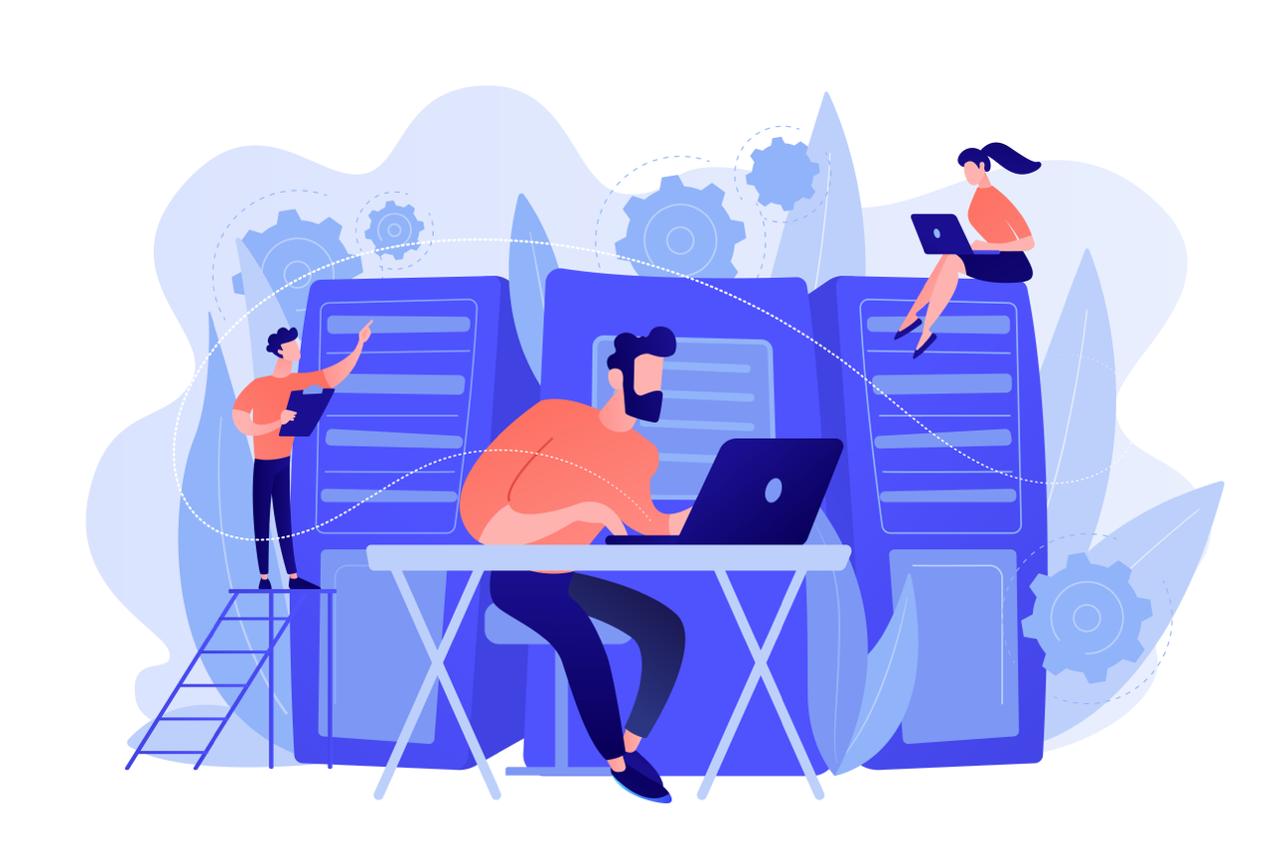
Protection of Workers’ Rights
Even in stable and modern companies, employees sometimes face violations of their labor rights—delayed salaries, unlawful dismissal, changes in working…
Even in stable and modern companies, employees sometimes face violations of their labor rights—delayed salaries, unlawful dismissal, changes in working conditions without consent, refusal of vacation, or discrimination. Such situations not only create stress but also undermine trust in the employer, making it difficult for the specialist to focus on work and professional development.
Protection of workers’ rights is not just a legal tool but a way to restore justice, maintain reputation, and ensure confidence in the future. This is especially important in the dynamic IT and digital sectors, where employees often work flexible schedules, contracts, or in distributed teams, which can sometimes complicate understanding their real rights and responsibilities.
In this article, we will examine the guarantees provided to workers, what actions can be taken when rights are violated, and why timely legal support helps not only resolve conflicts but also prevent them.
What Rights Are Guaranteed to the Worker
Every employee, regardless of the field of activity, form of employment, or level of position, has basic labor rights that ensure fair and safe working conditions. These guarantees aim to protect the interests of the employee and maintain balance in the relationship between them and the employer.
The right to payment and decent working conditions
Every worker has the right to receive their salary on time and in full. Payment must be transparent, correspond to the terms of the contract, and not depend on subjective factors. The employer must comply with established payment deadlines and provide equal pay for work of equal value. Additionally, the employee has the right to safe working conditions that meet sanitary and technical standards.
The right to rest and vacation
Labor legislation guarantees employees a set duration of working hours and mandatory days off, as well as paid annual leave. This right cannot be restricted by the employment contract or internal company rules. In the IT sector, where schedules are often flexible, it is important that rest periods are established in the company’s internal documents.
The right to information about working conditions
Employees must be informed about their working conditions: salary amount, working hours, possible changes in duties or pay systems. The employer is obliged to provide copies of documents related to labor relations upon the employee’s first request.
Guarantees when concluding, changing, and terminating an employment contract
When hired, the employee has the right to review the contract terms before signing it; when changes occur, they can consent or refuse if adjustments worsen their situation. Upon dismissal, the employee must be provided with all payments and documents within the established deadlines.
The Most Common Violations of Labor Rights
Despite labor guarantees for employees, many face situations where the employer violates established norms. Sometimes this happens due to a lack of understanding of legal standards but often results from a deliberate attempt to cut costs or strengthen control over personnel. Let’s look at the most common types of violations that workers seek protection against.
Delayed or partial payment of wages
One of the most common violations is untimely or partial payment of wages. Employers may delay money, citing “temporary difficulties,” “cash flow gaps,” or “accounting errors.” However, such reasons do not exempt the company from responsibility. The employee has the right to demand not only the full payment owed but also compensation for the delay.
Illegal dismissal or transfer without consent
Some employers abuse the right to dismiss, especially regarding employees who disagree with management or demand their rights be respected. Cases of termination ‘by mutual agreement’ under pressure or transfer to another position without the employee’s written consent are common. It is important to remember: any change to the contract terms must be documented and confirmed by the signatures of both parties.
Violation of working hours and refusal of leave
In the IT and digital sectors, a flexible schedule often turns into constant overtime. Employees work extra hours without additional pay, and requests for leave are postponed ‘until the project is completed’. Such practices violate the right to rest and can negatively affect health and productivity. The employee has the right to demand compliance with working hours and compensation for overtime.
Discrimination and pressure from the employer
Pressure can take the form of threats of dismissal, limitation of career opportunities, unequal treatment, or creating a psychologically unfavorable atmosphere. Unfortunately, such situations are found even in modern companies that formally proclaim the principles of equality and corporate culture. Any actions putting the employee in an unequal position can be considered a violation of their labor rights.
Protection against such violations begins with documenting the facts and timely seeking help. The earlier the employee responds to unlawful actions by the employer, the higher the chances of restoring justice and preventing further conflicts.
How to act when labor rights are violated
When the employer violates the terms of the employment contract or ignores rights guaranteed by law, it is important not to act impulsively but to properly document the violations and choose the right protection strategy. The sequence of steps in such situations plays a key role — the outcome depends on it, whether justice will be restored and the rightful result obtained.
Step 1. Documenting the facts of violation.
The first thing the employee should do is gather evidence. It is important to document everything that confirms the fact of violation:
- copies of the employment contract, orders, time sheets, payroll slips.
- Correspondence with the employer or manager in corporate messengers and by email.
- Witness testimonies from colleagues.
- Screenshots or other digital evidence if the violation occurred online.
The more documentary evidence there is, the easier it is to prove the truth during proceedings both internally and in court.
Step 2. Claim procedure — contacting the employer.
At the initial stage, it is worth trying to resolve the conflict within the company. The employee can send an official written complaint (claim) addressed to the employer or the HR department. The complaint should clearly describe the nature of the violation, attach evidence, and specify what exactly you demand — for example, salary payment, leave provision, or cancellation of an illegal order.
If there is no response or the employer refuses to acknowledge the violation, the next step is to apply to the labor dispute commission (LDC), if it operates at the enterprise. The LDC considers employee claims and can make decisions binding for the employer. However, LDC does not consider disputes related to dismissals.
Step 3. Contacting the labor inspection or court.
If a peaceful resolution fails, a complaint can be filed with the state labor inspection. This body conducts inspections of the company, issues orders to eliminate violations, and may hold the employer accountable.
In cases involving dismissal, unpaid wages, or moral damage, the employee has the right to go to court. A claim can be filed within the legally established deadlines (usually within a month from the violation date). Judicial protection makes it possible to achieve reinstatement at work, compensation recovery, or modification of the dismissal wording.
The main thing is not to delay and not to hope the problem will ‘resolve itself’. Properly prepared documents and timely actions will help defend your rights and prevent similar violations in the future.

Judicial protection of workers’ rights
If an employee fails to resolve a conflict with the employer amicably—through negotiations, a claim, or appeal to the labor dispute commission—the next step is judicial protection. The court is an effective tool for restoring violated rights, especially in cases involving illegal dismissal, non-payment of wages, or discrimination.
What claims can be made
The employee has the right to go to court with various claims depending on the nature of the violation. The most common are:
- reinstatement at work—when the employee considers the dismissal illegal.
- Payment of arrears in wages, bonuses, compensations.
- Changing the wording of dismissal in the employment record book.
- Claiming compensation for moral damage—when the rights violation led to stress, worsening health, or reputational loss.
- Claiming interest for delayed payments or other losses related to the employer’s unlawful actions.
In some cases, the court may require the employer not only to compensate for damages but also to cover the employee’s legal costs.
Deadlines for filing a lawsuit
Labor law sets specific deadlines for filing claims.
For dismissal cases—within one month from the day the copy of the order or the employment record book is handed over.
For cases related to wage delays or other payments, and other violations—within three months from the moment the employee became aware of the violation.
Missing these deadlines may be grounds for refusal to consider the case, so it is important to seek consultation promptly.
The role of evidence and legal support
Even if the violation is obvious, the success of the case largely depends on how properly the evidence is collected and presented. The court considers: the employment contract, orders, correspondence, pay slips, inspection reports, and witness statements. The more complete the evidential base, the higher the chances of satisfying the claims.
At the same time, having a lawyer significantly increases the effectiveness of the defense. A specialist will help formulate the claims correctly, assess the prospects of the case, prepare documents, and represent the employee’s interests in court. This is especially important when the employer has its own legal department and tries to minimize their liability.
Judicial protection is not a last resort but a legitimate way to restore justice and confirm that the employee’s rights truly matter.
Features of protecting workers’ rights in the IT sector
Labor relations in IT companies have their own specifics: flexible schedules, project-based employment, working with foreign clients, and the spread of cooperation models beyond the classic employment contract. All this makes the protection of IT specialists’ rights more complex but no less important.
Contract work, flexible schedules, and remote employment
Many IT companies employ staff under contracts that specify individual conditions—deadlines, bonuses, the possibility of early termination. An important nuance here is that the contract must comply with labor laws and not infringe on the employee’s rights.
Flexible schedules and remote work do not mean abandoning labor time standards. The employer must account for overtime, provide opportunities for rest and vacations. Even in remote work arrangements, employees have the same guarantees as office workers: timely payment, social benefits, and protection against unjustified dismissal.
Relations through EOR, outstaffing, or sole proprietorship
Alternative cooperation models are increasingly used in the IT sector:
- EOR (Employer of Record) — when the employer officially hires an employee through an intermediary.
- Outstaffing — when a specialist is registered in one company but actually works in another.
- Contract with an individual entrepreneur — when the developer acts as a contractor.
In such cases, it is important to understand what kind of relationship actually takes place. If the employee follows internal rules, works according to a schedule, and receives a fixed payment, then it is an employment relationship, regardless of the contract form. This means that if rights are violated, one can demand their protection on par with other employees.
How to protect yourself in case of informal agreements and digital communications
IT specialists often agree on work through correspondence — in Telegram, Slack, Discord, or by e-mail. However, even such communication can serve as evidence in case of a dispute. Therefore, it is worth saving all messages, files, screenshots of tasks, and payment correspondence.
If the employer offers verbal agreements — for example, promises bonuses, premiums, or promotions — it is worth insisting on written documentation. Without documents, proving a violation will be difficult.
In addition, IT employees who work with foreign companies are advised to check the terms of the contract: applicable law, dispute resolution procedure, and payment currency. A poorly drafted contract may cause the protection of rights to be impossible in the jurisdiction where the employee is located.
Thus, the specifics of the IT field require specialists to pay special attention to legal details. Understanding one’s rights and properly documenting relationships helps avoid conflicts and protect interests even in non-standard cooperation formats.
Why it is important to seek legal assistance
When employment relations reach a conflict stage (especially when it comes to rights violations, payment delays, or disputed dismissal), many employees try to solve the problem on their own. However, practice shows that without professional support, this often leads to mistakes, loss of time, and, most importantly, weakening the employee’s position.
How a lawyer helps to build a defense strategy
A labor lawyer assesses the situation comprehensively: checks documents, correspondence, formulations of orders, and agreements. Based on this, a strategy is formed — what arguments to use, where to appeal, how to best document evidence.
The specialist will advise which claims can realistically be made (reinstatement at work, compensation, changing the dismissal wording, etc.) and what steps help minimize risks — for example, if the employer tries to exert pressure or force the signing of unfavorable documents.
Benefits of negotiating through a representative
When a lawyer enters into dialogue with the employer, it immediately changes the dynamics of the dispute. The employer understands that the employee knows their rights and is ready to defend them by legal means. As a result, it is often possible to resolve the conflict before court — for example, to obtain payment of arrears or revision of dismissal conditions pre-litigation.
In addition, the lawyer will help formulate claims correctly, taking into account legislation and judicial practice, which increases the chances of a positive outcome.
How legal support helps preserve professional reputation
For many specialists, especially in IT, it is important not only to win the dispute but also to maintain a positive reputation within the professional community. Conflict with a former employer should not affect one’s career or references.
An experienced lawyer will help build a defense so that the conflict is resolved as properly as possible and without unnecessary publicity — through negotiations, mediation procedures, or targeted court action.
Thus, legal assistance is not just a way to uphold your rights but also a tool for maintaining business relationships and professional image. By seeking support in time, the employee gains confidence that their interests will be protected competently and with consideration of all legal nuances.
Conclusion
Protecting labor rights is not just a matter of justice,but also a guarantee of professional stability and confidence in the future. Regardless of the field of activity, every employee has the right to fair treatment, timely payment, and safe working conditions. If your rights are violated, it is important not to delay addressing the issue and to act consistently — starting with documenting the violations and ending with seeking legal assistance.
Our lawyers are ready to provide consultations on labor rights protection, help assess the prospects of your case, prepare the necessary documents, and represent your interests in resolving labor disputes both out of court and in court. We ensure a professional approach and complete confidentiality so you can focus on what matters most — your work and career development.
Our Blog
The latest news in our blog
A Complete Guide to Job Classification
The IT sector continues to develop actively, and with it, the diversity of positions, roles, and specializations within companies grows….
Brief Overview of Labor Legislation in Belarus
Belarus remains an attractive point on the map for international IT companies due to its strong engineering school, competitive hiring…
How EOR Simplifies Payroll and Tax Management in Belarus
Belarus remains one of the most attractive markets in Eastern Europe for hiring IT and digital professionals. Companies from the…
Contact
We’re available for the new projects



